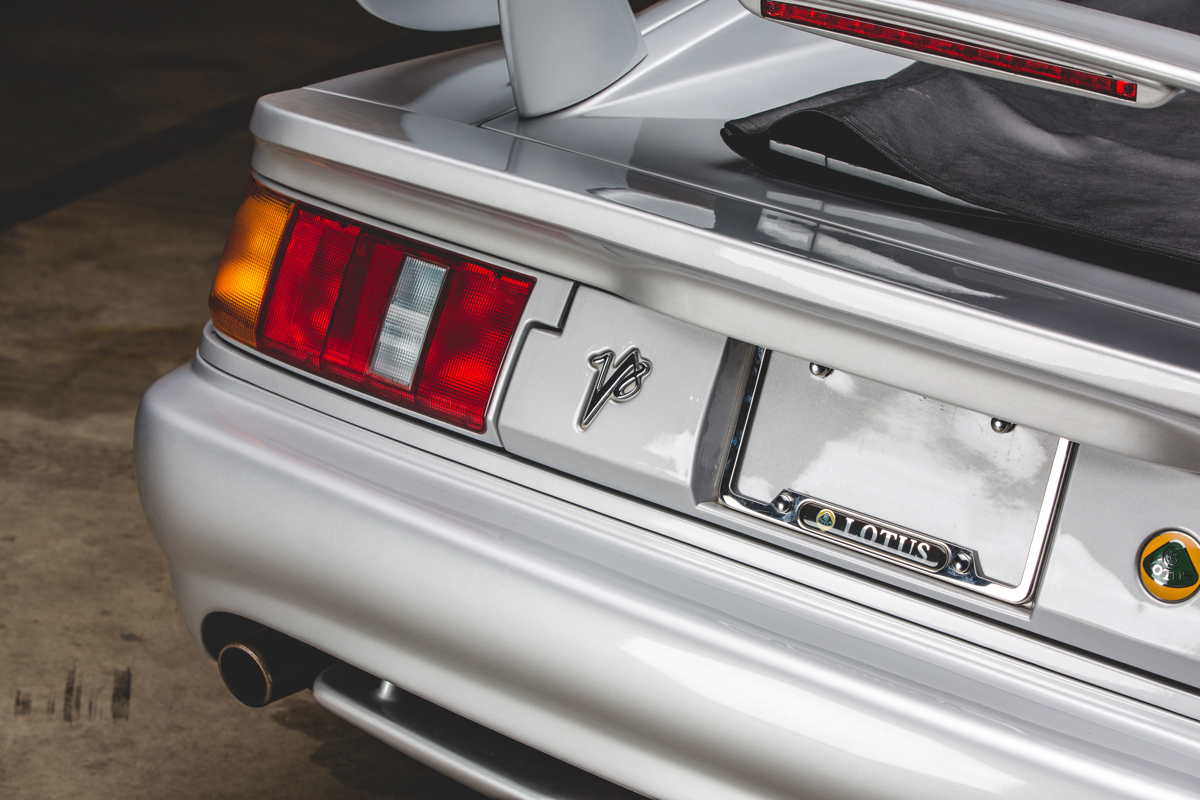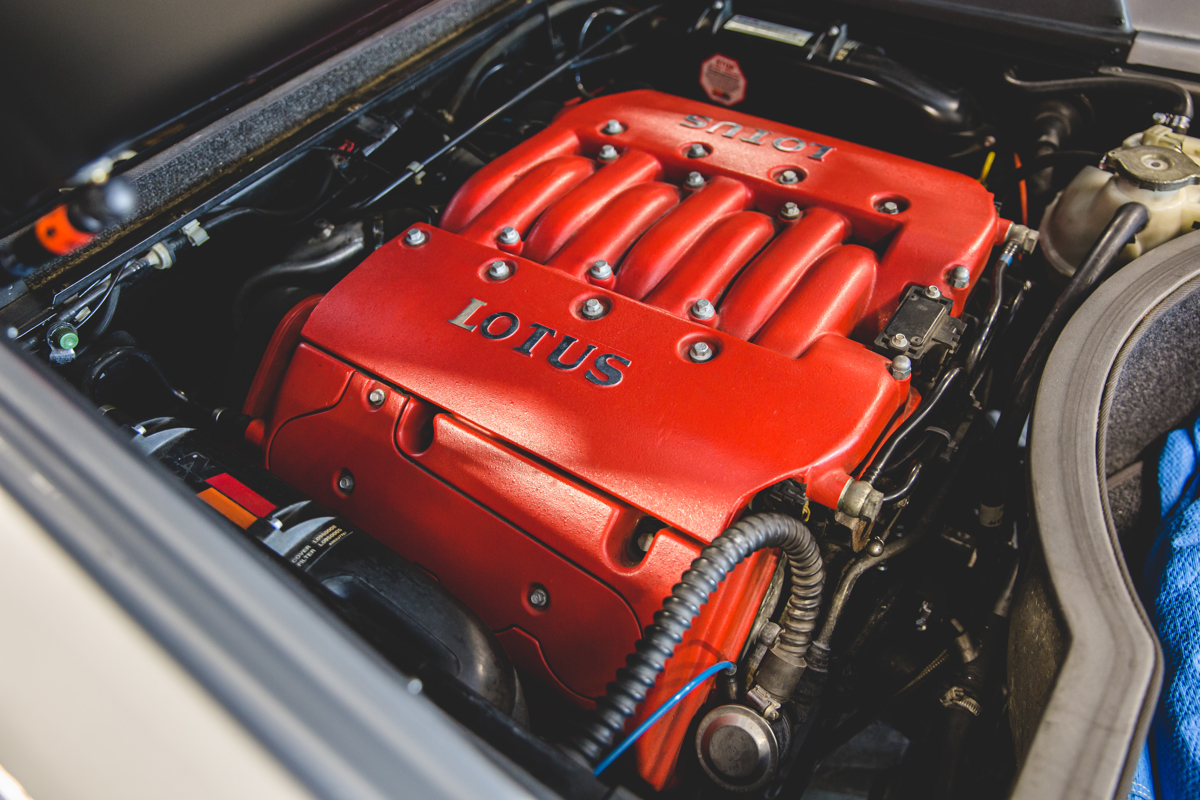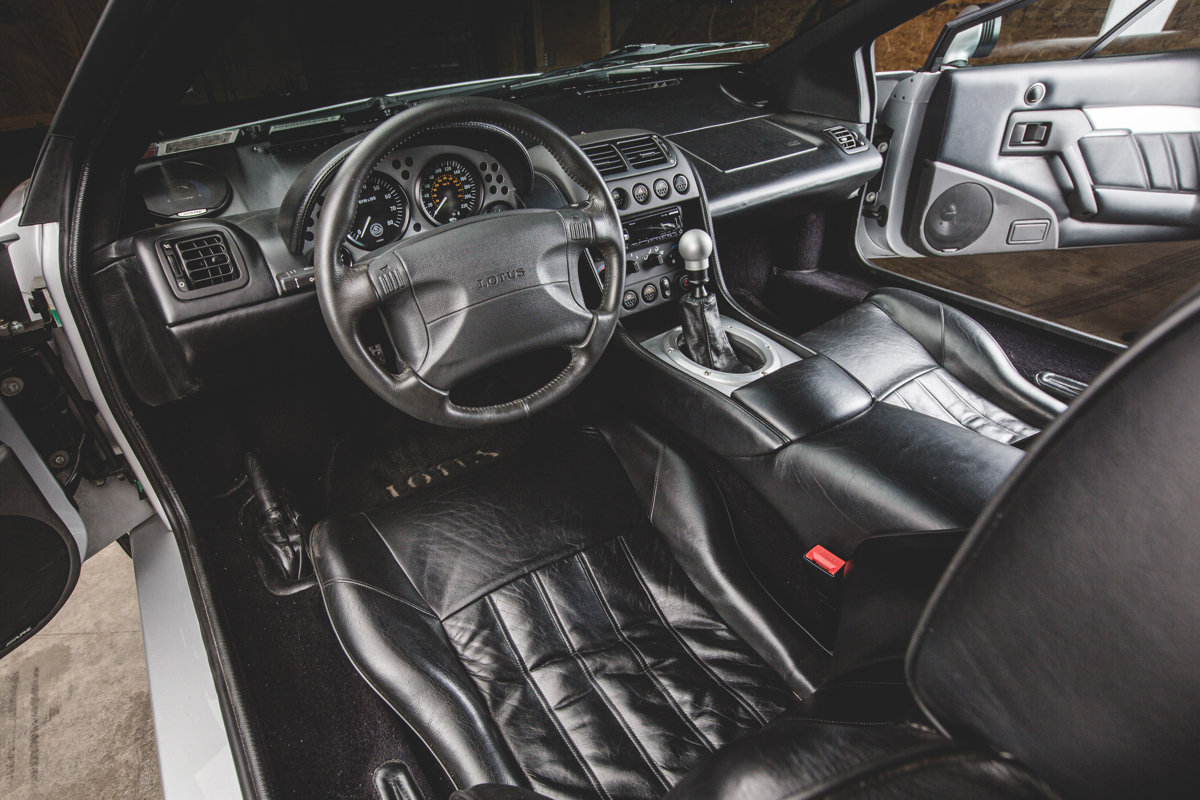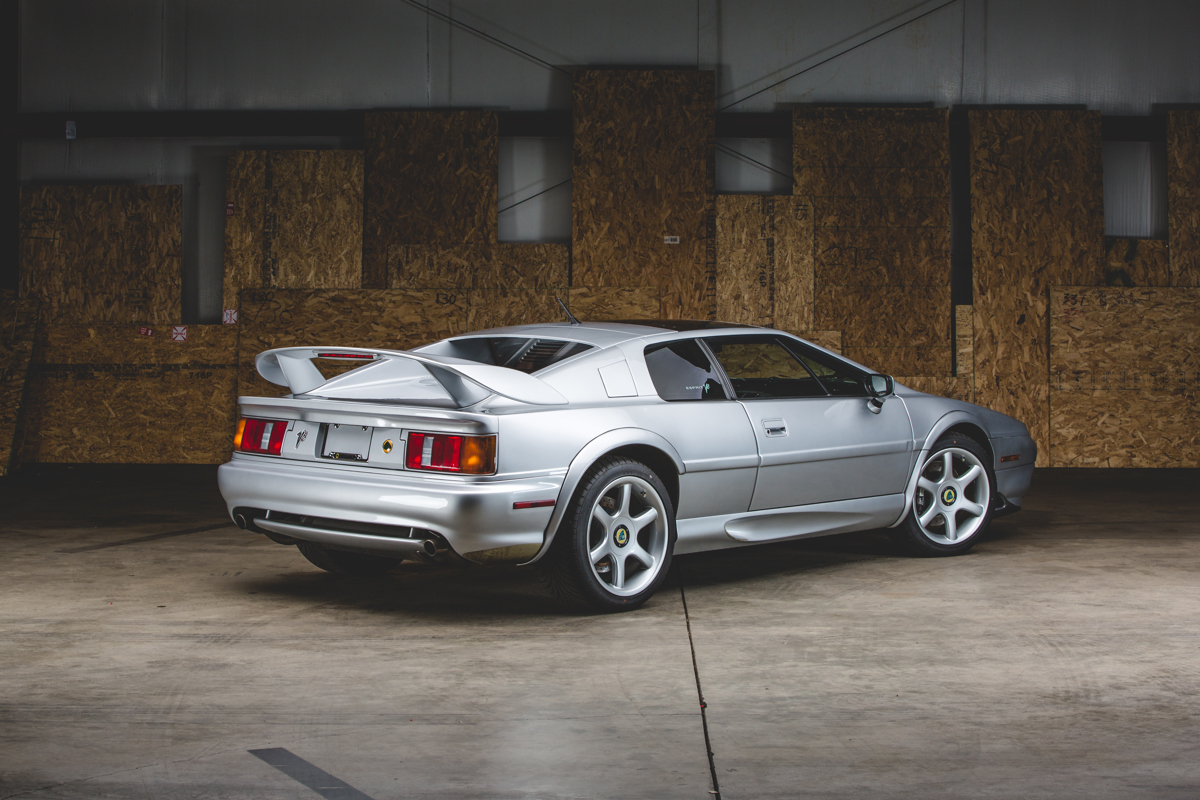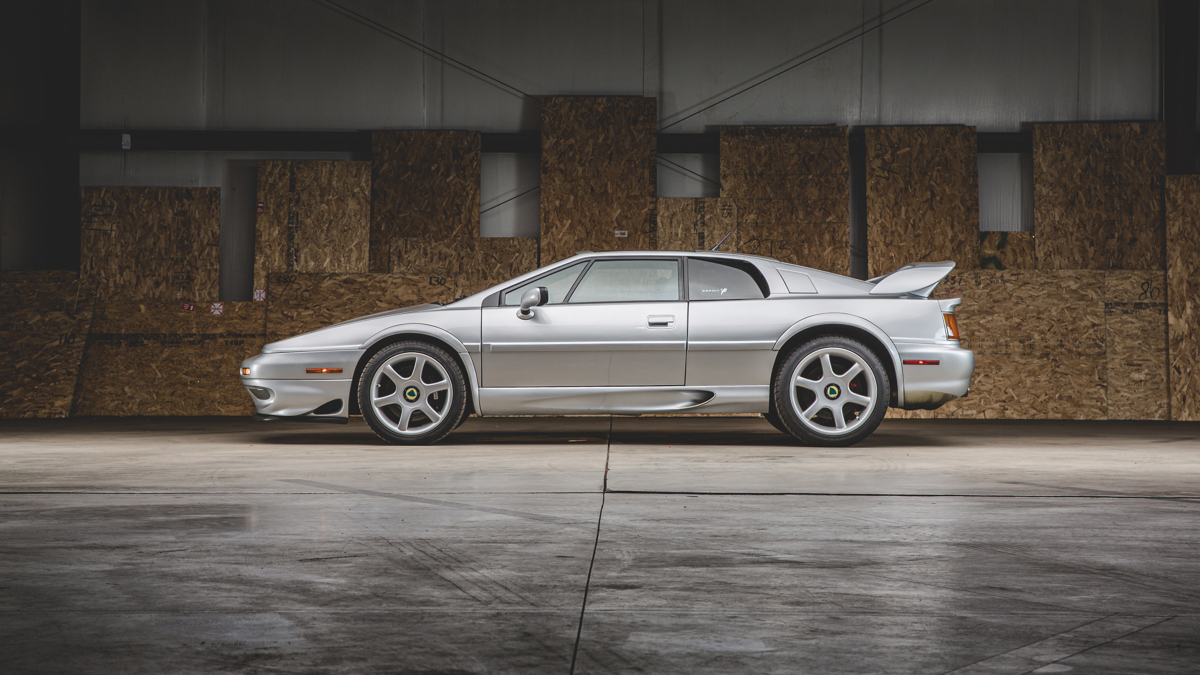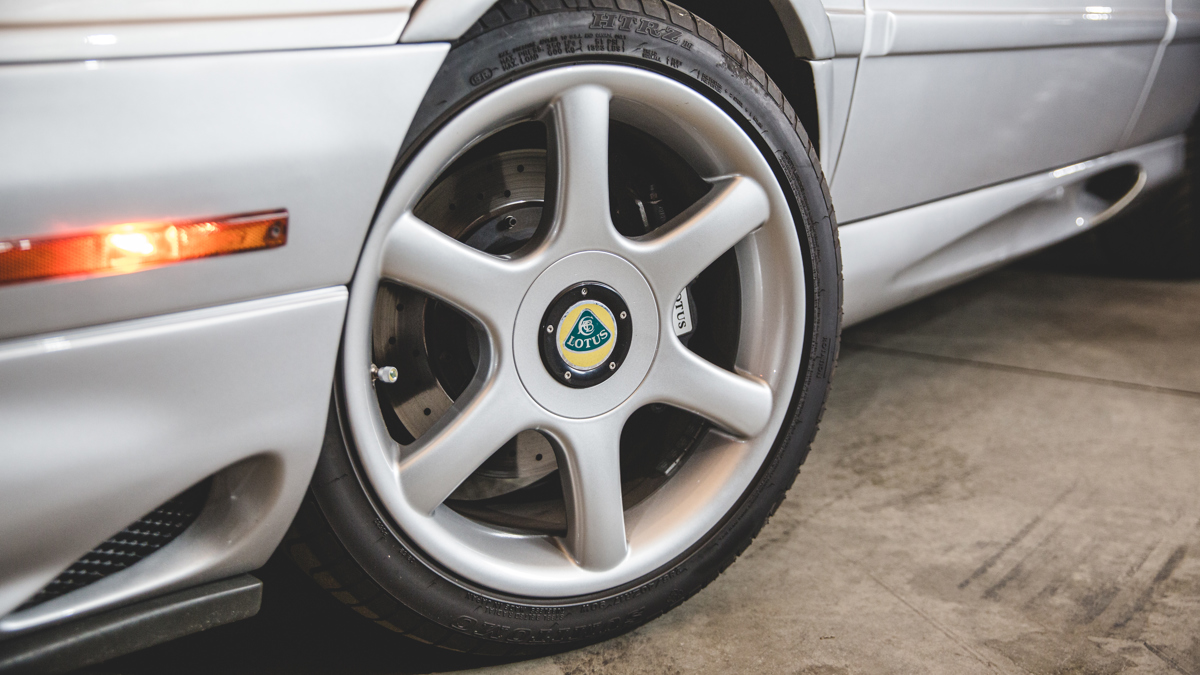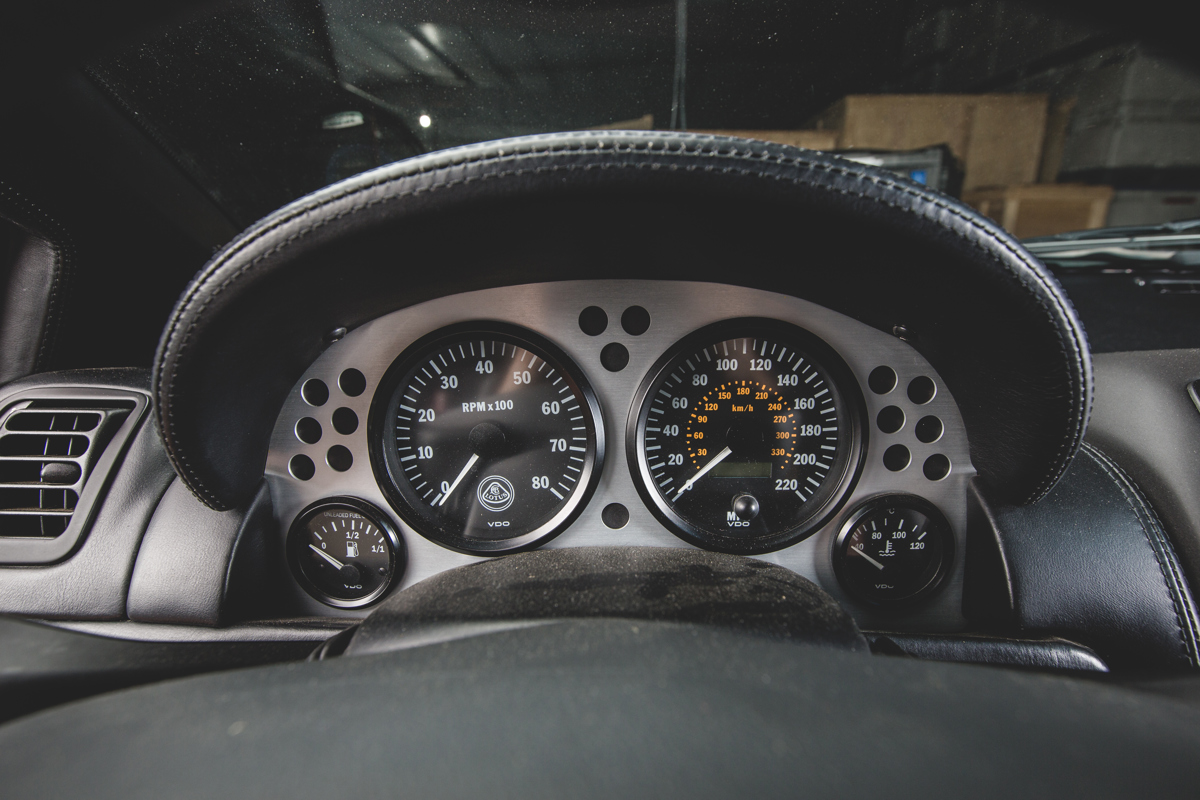Colin Chapman founded Lotus in 1952, initially running the company in his spare time with a group of enthusiasts to create lightweight and nimble sports cars fit for competition. An engineer by trade, Chapman displayed a knack for problem solving in innovative ways and unconventional methods which proved vital to achieving the automotive technological advancements he would eventually be remembered for. From Formula 1® to road cars, each Lotus was designed with handling being paramount rather than brute horsepower. Chapman passed away suddenly from a fatal heart attack in December of 1982, but his design methodology lives on to this day in both Lotus and the innovations he had developed in the years prior.
Among the most revered Lotus models is the company’s history is the Lotus Esprit, due to its unique styling and mid-engine layout. The first model was introduced in 1976 with sharp, polygonal styling and was among the firsts of Giorgetto Giugiaro’s “folded paper” designs. Over the course of its 20-year production run, the Esprit received a complete redesign in 1993 at the hands of designer Julian Thomson, smoothing the bodywork and creating its distinguished shape for the next decade to follow. With the refreshed bodywork came a much-needed increase in power in the form of the V-8 engine.
RM Sotheby’s is proud to offer a largely original and well-kept example of the Esprit V8 SE through the Online Only auction platform. Scroll down to explore the highlights of one of Britain’s most beloved contemporary sports cars.
2001 Lotus Esprit V8 SE
Estimate: $60,000 - $80,000 USD
All New, Lotus Developed V-8 Engine
At a cost of 7.5 million dollars, the new engine was designed and developed in house by Lotus Engineering to be compact and simple. John Owen, the Esprit V8’s senior project manager, comments on the lessons learned during development "Keep things simple. You find that most engines grow like Christmas trees, with bits stuck on them everywhere. But to keep down complexity and cost of manufacture, neat design solutions are everything. I didn't want any more than 250 parts numbers in this engine, whereas you usually have about 400. And one of the design rules was that there should be no more than one inch of unused cubic space anywhere in the engine."
Twin-Turbocharging
Beneath the rear hatch, the scarlet red plenum and cam covers peek through the same tiny space where the 2.2-liter four-cylinder engine previously resided. The flat-plane crank, 90º V-8 features dual-overhead camshafts with four valves per cylinder, and twin Garrett T25/60 turbochargers to produce 350 horsepower at 6,250 rpm and 295 foot-pounds of torque at 4,300 rpm.
Revised Six-Speed Transaxle
In 1996, the Renault transaxle was upgraded by Lotus racing driver Derek Bell to have a thicker single piece input shaft for additional strength to accompany the increase in horsepower. This example has received extensive service work in the past year, including a transmission refresh, which included a new clutch and synchros, in addition to the installation of the EMCO UN1 upgrade kit with a new mainshaft and a taller first and second gear set.
Attractive Contemporary Styling
Designer Julian Thomson smoothed the dated angular wedge-shaped styling of the first three generations of the Esprit, completely redesigning the panels for a modern supercar look. The addition of cooling vents and ducts add an aggressive aesthetic while drawing air around the vehicle and to critical components. The addition of a raised, wrap around rear spoiler adds to the racy new look, and provides additional downforce as the Esprit approaches its top speed of 175 mph.
Original New Aluminum Metallic Paint
This example was the first of only seven finished in New Aluminum metallic (B35) for the 2001 model year. Despite its age, only minor imperfections in the paintwork are evident, with small chips in the paint on the front bumper, lower rocker panels, and behind the rear quarters behind the wheels. The original protective film around the side-rocker duct entries as well as behind the rear wheels have yellowed somewhat with age but have protected the paint underneath.
Refined Interior
Lotus split the Esprit V8 range into two models–the SE and GT. The SE was the most luxurious of the two, and featured adjustable plush leather bucket seats, leather wrapped door panels, center console and dashboard. It presents today in excellent condition, with minor wear on the driver side bolster from entry and exit.
Desirable Options
This example was ordered new with the top-of-the-line SE package which included the large wrap-around wing and air conditioning as standard. The addition of a glass roof panel added $695 to the price tag, with the original color-matched roof panel included in a protective case with the vehicle. An upgraded Alpine UTE-73BT Bluetooth digital media receiver with hands-free microphone was also added.
Comprehensive Service Records
Extensive service work has been performed over the course of the past year to the total of over $40,000. Notable items include new tires, mounted and balanced on the factory O.Z. Racing wheels; a new water pump, with the thermostat and hoses replaced in the process; a complete engine belt service; the heat A/C system serviced, all fluids changed, and the aforementioned transmission service.
Driven Sparsely, Meticulously Maintained
The odometer shows less than 28,400 miles from new but has been meticulously maintained throughout its lifetime at great expense. Following the most recent servicing, this example of one of Lotus’s greatest and most beloved mid-engined models is ready to offer a lucky new owner a thrilling driving experience through the culmination of Lotus’s superb handling expertise paired with twin-turbocharged V-8 power.


